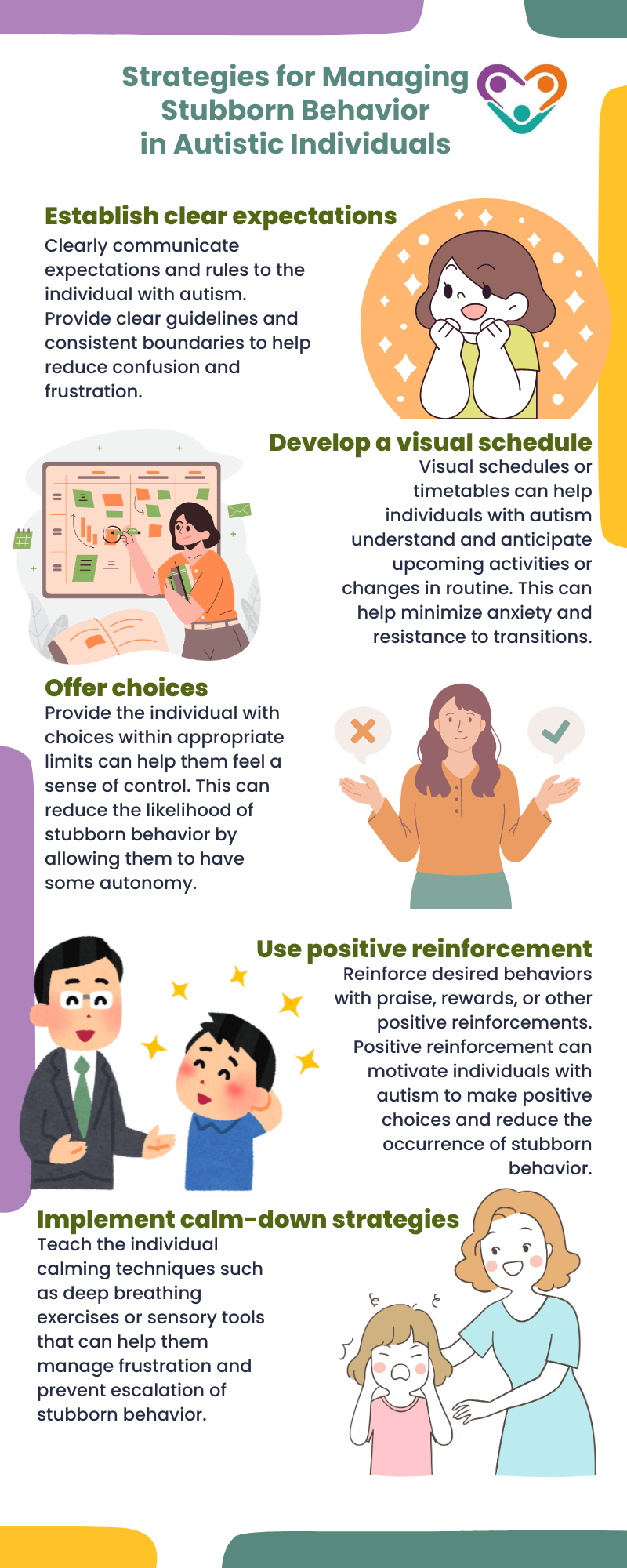Autism problem behaviors refer to actions or responses that may be challenging or atypical, often exhibited by individuals on the autism spectrum. These behaviors can vary in intensity and presentation, making it crucial to understand their underlying causes.
It’s important to note that problem behaviors are not intentional or a result of willful misbehavior.
Children with autism may display stubbornness and rigidity as problem behaviors. Stubbornness is defined as the determination not to change an attitude or perception, while rigidity refers to the inability to change or adapt. Many children with autism demonstrate rigidity, which can lead to difficulties with changes in routine.
On the other hand, stubbornness is when autistic individuals simply refuse to change their ideas.
Understanding the nature of these problem behaviors is crucial for implementing effective strategies to address and manage them. In this article, we’ll cover the things that you need to know about such behaviors among autistic individuals.

Differentiating Between Stubbornness and Rigidity
While stubbornness and rigidity may seem similar, there are important distinctions between the two.
Stubbornness is characterized by a strong determination to hold onto one’s ideas or preferences, often leading to a refusal to change or comply with requests. This can manifest as resistance to transitions, following instructions, or engaging in activities that are outside their comfort zone. It might sometimes be associated with oppositional defiant disorder, albeit a bit more tamed.
Rigidity, on the other hand, refers to difficulty in adapting to changes or new situations. Individuals with autism may struggle with inflexibility when faced with alterations to their routines, environments, or expectations. This inflexibility can be distressing for them and may result in emotional outbursts or meltdowns.
Differentiating between stubbornness and rigidity is important for understanding the root causes of these problem behaviors and developing appropriate strategies for addressing them.
By identifying whether a behavior stems from a refusal to change or an inability to adapt, parents, caregivers, and educators can tailor interventions and support to meet the specific needs of individuals with autism.

Factors Contributing to Stubborn Behavior in Autism
To understand and manage stubborn behavior in individuals with autism, parents and caregivers should consider the various factors that contribute to this behavior. There are two significant factors for this which are as follows:
Presence of Positive Traits
While stubborn behavior can present challenges, it’s important to note that stubborn individuals with autism often possess positive traits that can contribute to their overall development and growth.
Some of these positive traits include decisiveness, perseverance, conviction, an unwillingness to compromise, and the ability to be inspirational.
These positive traits can lead to setting and achieving goals, resilience in the face of challenges, and the development of strong convictions. By recognizing and harnessing these traits, caregivers and individuals with autism can work together to channel stubbornness into productive and positive outcomes.
Sensory Overload
Sensory issues are common in individuals with autism, and these can greatly impact their behavior and responses to certain situations.
Sensory overload occurs when an individual’s sensory systems become overwhelmed by stimuli in their environment. This overload can lead to feelings of discomfort, anxiety, and even pain.
For individuals with autism, sensory overload can be a contributing factor to stubborn behavior. When faced with overwhelming sensory input, such as loud noises, bright lights, or strong smells, individuals may exhibit stubbornness as a way to avoid or cope with these overwhelming experiences.
It is important to recognize the sensory connection between stubbornness and avoiding certain activities that have triggered sensory overload in the past.
How to Manage Stubborn Behavior in Autism
By recognizing and addressing stubborn behaviors, parents and caregivers can help create a supportive environment that promotes positive outcomes. Additionally, it’s crucial to recognize and utilize the positive traits that often accompany stubbornness in autism.
Addressing stubborn behaviors in individuals with autism requires a tailored approach that takes into account their unique needs and challenges. Here are some strategies that can be effective:

Recognizing and Utilizing Positive Traits
While stubbornness can sometimes present challenges, it’s important to recognize and utilize the positive traits that often accompany stubbornness in individuals with autism as well. These positive traits can include:
- Decisiveness – Individuals with autism who display stubbornness often have a clear sense of what they want or believe, which can lead to decisive actions and decision-making.
- Perseverance – Stubborn individuals with autism have a strong level of perseverance, which can be channeled into achieving goals and overcoming obstacles.
- Conviction – Individuals with autism who exhibit stubbornness often hold strong convictions, which can lead to a sense of purpose and determination.
- Unwillingness to compromise – While this trait can sometimes lead to challenges, it can also be seen as a strength when individuals maintain their values and boundaries.
Recognizing and acknowledging these positive traits can help caregivers provide feedback and support that resonates with the individual, fostering a sense of empowerment and motivation.

Professional Help and Resources
When faced with stubborn thinking and rigidity in adults with autism, seeking professional help is a valuable step.
Mental health professionals, such as psychologists or psychiatrists, who specialize in working with individuals with ASD can provide a comprehensive assessment and develop a personalized treatment plan. They can help identify the underlying factors contributing to stubborn thinking and rigidity and offer strategies to address these challenges.
Furthermore, there are various resources available that can offer guidance and support. Support groups, both online and in-person, provide individuals with autism and their caregivers a platform to connect with others who may be facing similar experiences.
These support networks can help individuals gain valuable insights and exchange practical advice for managing stubborn thinking and rigidity.
By seeking professional help, individuals with autism can access valuable resources and strategies to address stubborn thinking and rigidity. These interventions have the potential to promote flexibility, improve mental well-being, and enhance social connections for adults on the autism spectrum.
If you’re seeking specialized ABA therapy in New Jersey, Indiana, Georgia, and New York, Golden Care offers comprehensive services tailored to meet the unique needs of each individual. Contact us to learn more or book a consultation today.
Sources:
https://www.autismparentingmagazine.com/autism-stubbornness
https://www.noodlenook.net/autism-stubborn-behavior
https://www.verywellhealth.com/autistic-behavior-or-misbehavior-4047387



